Complimentary worldwide shipping on orders over $400 · No import tariffs for most countries
Complimentary worldwide shipping on orders over $400 · No import tariffs for most countries
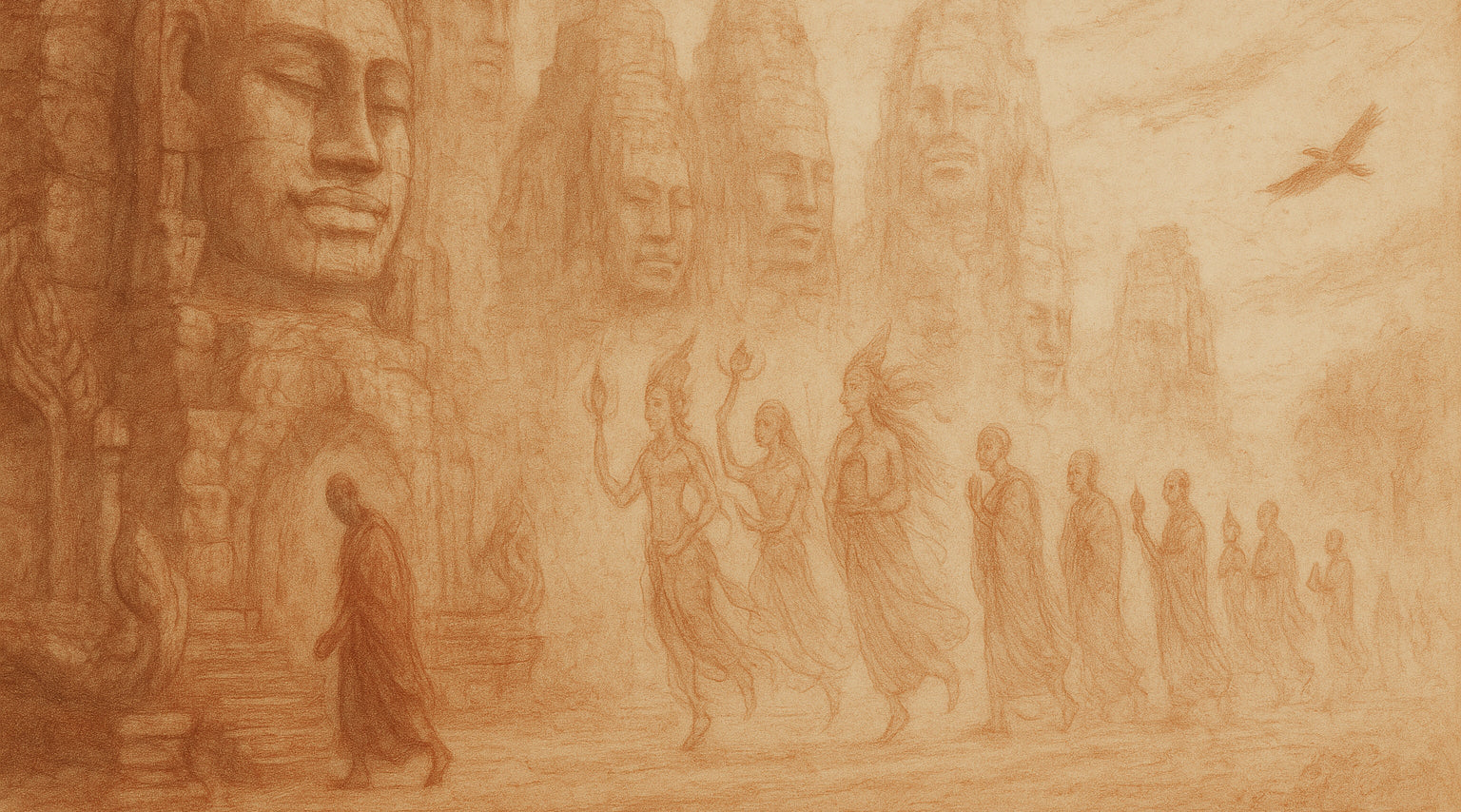
A Sanctuary Where Faces Keep Their Secrets
3 min read
"Within stone, silence breathes; within faces, eternity dreams."
In the hushed moments before dawn, when Angkor Thom’s walls float softly within silver veils of mist, the Bayon emerges as though rising from a timeless dream. Slowly it appears, revealing less than it conceals, inviting contemplation through silence rather than speech. To walk its intricate galleries is to feel time whispering gently—layer upon hidden layer, mystery within mystery. Here, no path presents itself plainly; no story offers simple answers. Each stone, each carved relief murmurs quietly of secrets known only to itself, echoes scholars chase yet never fully capture. In this temple of unanswered questions, wonder dwells.
I have often wandered here, passing through corridors of enigmatic carvings whose stories remain elusive yet quietly alive. Scenes etched delicately in stone whisper memories of ancient battles, fleeting glimpses of everyday grace, and royal processions whose significance has long since faded into sacred silence. Unlike the elegant clarity of Angkor Wat, where myth seamlessly merges with history, the Bayon invites us into ambiguity—a holy confusion compelling stillness, patience, and inward reflection.
From the central terrace, raised as though in reverent offering to the heavens, rise the iconic towers—faces serene yet mysterious, their silent eyes watching gently in all directions simultaneously. The faces of Bayon appear not merely carved but invoked, conjured from meditative visions. Travellers and scholars alike, standing beneath this gaze, sense an ineffable quiet, united in awe before a mystery too vast for language. Who do these faces represent? Early visitors whispered of Brahma—Prohm—but certainty remains gently out of reach. Perhaps, in their multiplicity, these faces embody divine watchfulness itself, silent guardians of a spiritual truth too expansive to name.
Even Bayon’s architecture resists simple definition. It is a sanctuary where Buddhist devotion quietly embraced earlier Hindu roots, and later visions softly overlaid earlier forms. Its cruciform galleries, perhaps echoing distant temples like Burma’s Ananda or sacred yantras symbolising cosmic harmony, gently guide pilgrims through sacred geometry—not merely housing the sacred, but awakening transformation. Within these overlapping corridors, Buddhism and Hinduism intertwine, timeless wisdom gracefully merging with royal aspiration.
Yet above all, it is the faces that embody Bayon’s mystery. Viewed from afar, their countless repetitions evoke cosmic realms mirrored infinitely; up close, each face becomes an intimate presence—a wise elder observing our passage without judgement or spoken word. They remain unnamed, keeping secrets once known only to those who knelt in reverence before the temple’s heart, where the Buddha, sheltered by a naga serpent, silently taught compassion and transcendent wisdom. Though this sacred icon no longer stands, its gentle spirit endures, reflected in the compassionate eyes of the watching faces.
Ancient inscriptions hint at sacred identities now beyond reach—images named but never fully described, ceremonies honoured but never fully explained. Avalokitesvara, the compassionate lord who gazes upon worldly sorrow, and Prajnaparamita, the embodiment of supreme wisdom, once stood beside the Buddha here, forming a trinity rich with spiritual meaning. King Jayavarman VII, who consecrated temples honouring his parents, intertwined his earthly lineage with these celestial figures, infusing his reign with profound symbolic depth. His devotion deepened Bayon’s sacred resonance—a resonance scholars now gently seek, their insights deepening rather than diminishing the temple’s profound mystery.
Indeed, it feels fitting that certainty eludes us here, within a sanctuary whose very essence embraces paradox and multiplicity. Bayon invites contemplation rather than comprehension, pilgrimage rather than proof. Here, Hindu gods and Buddhist bodhisattvas quietly coexist, Sanskrit blends gently with Khmer, divine compassion harmonises with human longing. History and myth dance softly together, each carving, each face, each passageway offering an invitation into deeper, more profound stillness.
Bayon remains timeless precisely because it guards uncertainty, asking nothing of us but presence—attentive, reverent, and deeply attuned. Standing quietly beneath its shadows, we join countless souls who have pondered its enigmas, shared its silent communion, and departed subtly transformed. More than mere stone, Bayon is a living invitation: to pause, to reflect, to listen beyond the edges of language.
Within the silence, the Bayon speaks its deepest truths, reminding us softly:
Faces carved in stone,
quiet as eternity—
knowing beyond words.
And in that lingering hush, one gentle truth endures—Bayon’s sacred mystery is not meant to be solved, only savoured.
Also in Library
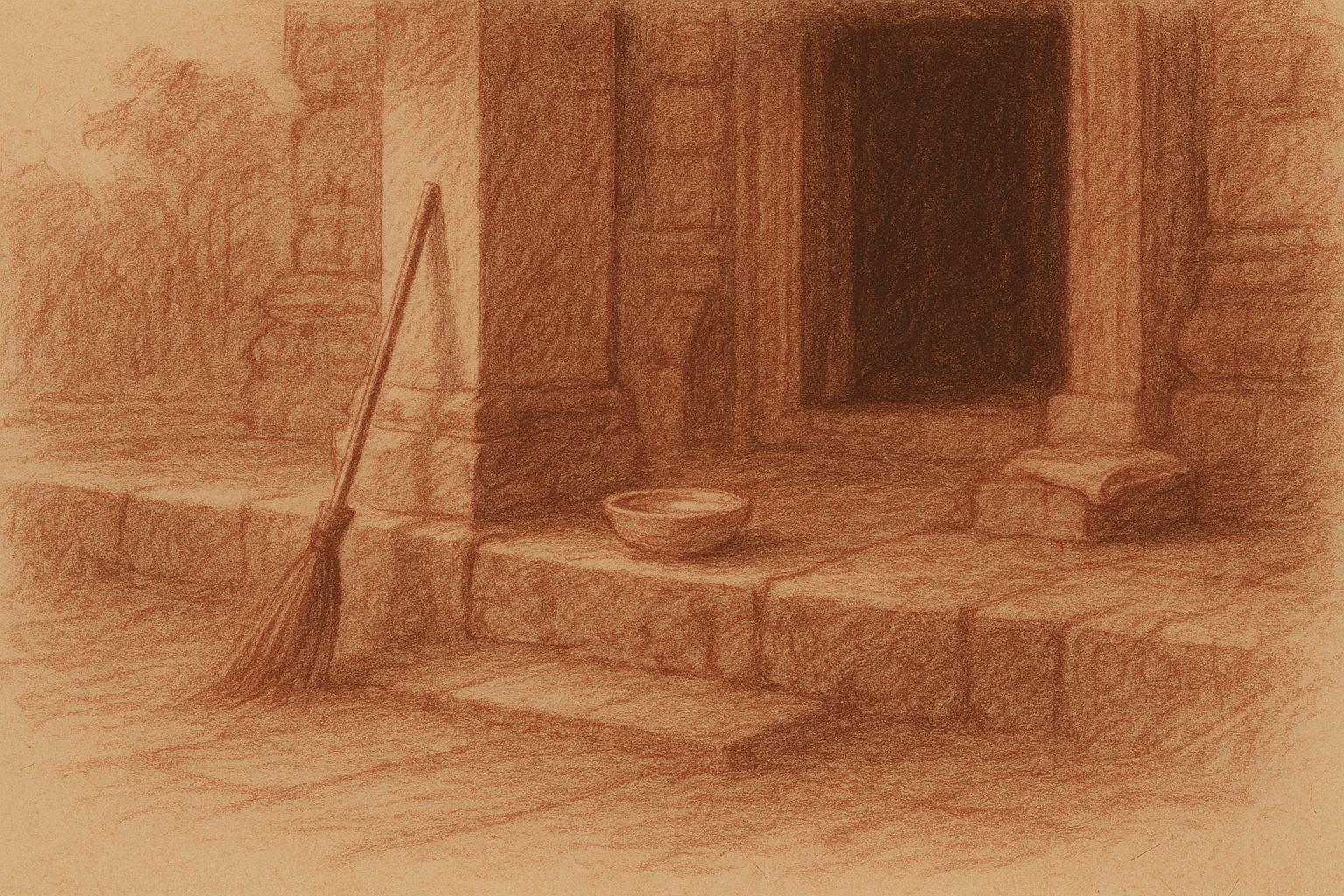
Those Who Keep the Way Open — On the Quiet Guardians of Angkor’s Thresholds
3 min read
Quiet gestures shape the way into Angkor — a swept stone, a refilled bowl, a hand steadying a guardian lion. This essay reflects on the unseen custodians whose daily care keeps the thresholds open, revealing how sacredness endures not through stone alone, but through those who tend its meaning.
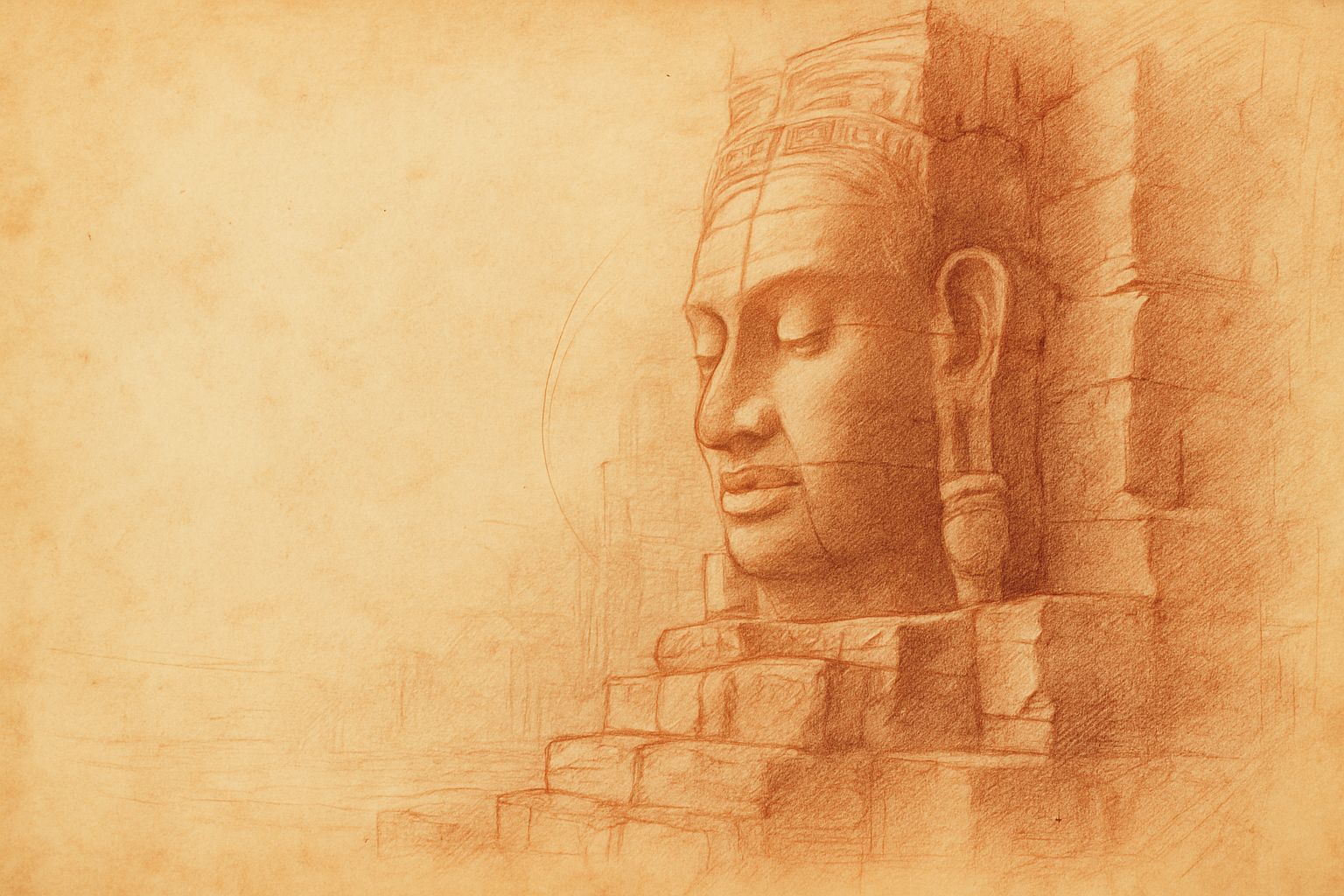
Multiplicity and Mercy — The Face Towers of Jayavarman VII
5 min read
A new vision of kingship rises at the Bayon: serene faces turned to every horizon, shaping a world where authority is expressed as care. Moving through the terraces, one enters a field of steady, compassionate presence — a landscape where stone, light, and time teach through quiet attention.
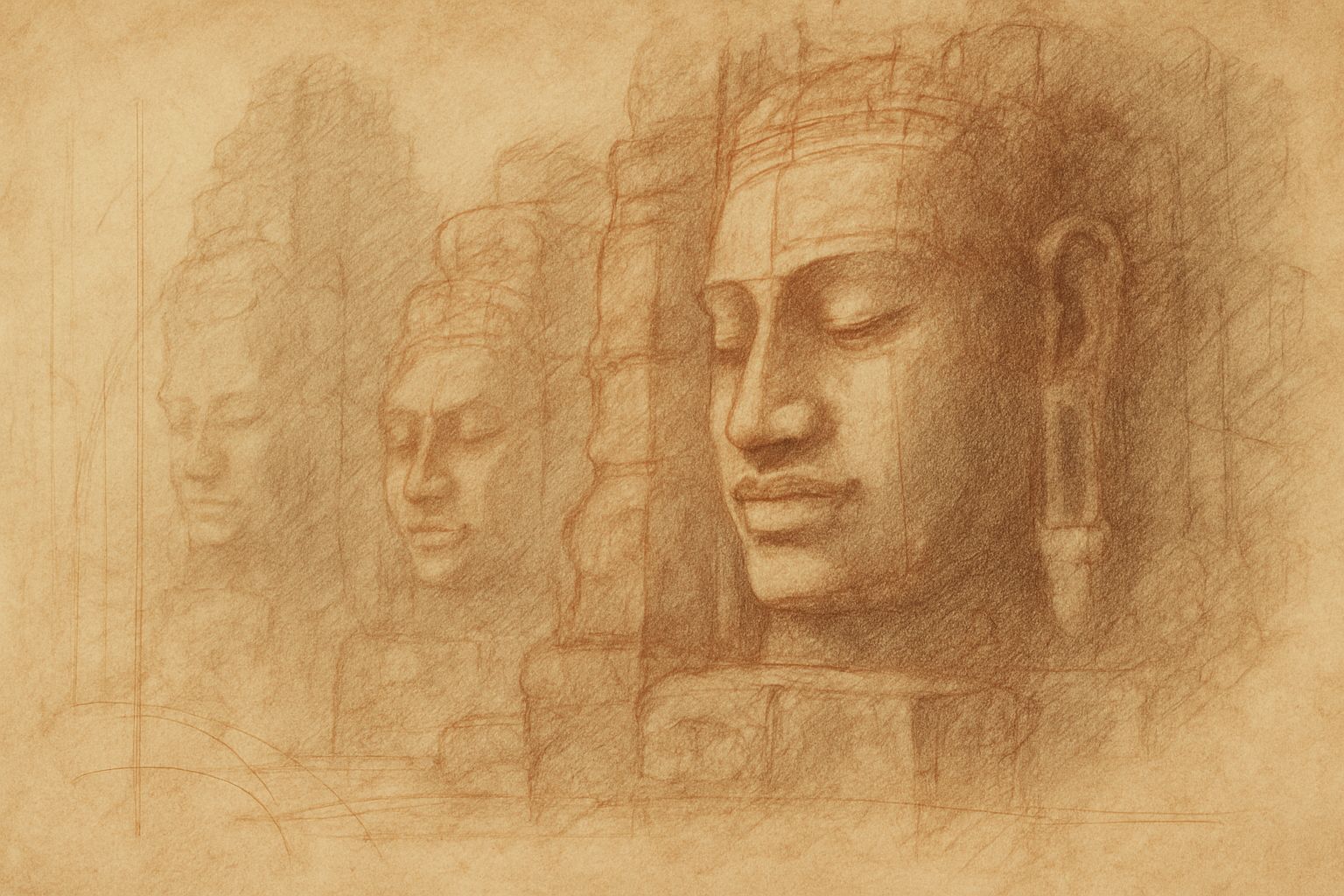
Stone That Dreams
4 min read
Bayon wakes like a mind emerging from shadow. Its many faces shift with light and breath, teaching that perception—and the self—is never singular. In walking this forest of towers, the pilgrim discovers a quiet multiplicity within, held together by a calm that feels both ancient and newly understood.
Join My Studio Journal
Receive occasional letters from my studio in Siem Reap—offering a glimpse into my creative process, early access to new fine art prints, field notes from the temples of Angkor, exhibition announcements, and reflections on beauty, impermanence, and the spirit of place.
No noise. No clutter. Just quiet inspiration, delivered gently.
Subscribe and stay connected to the unfolding story.
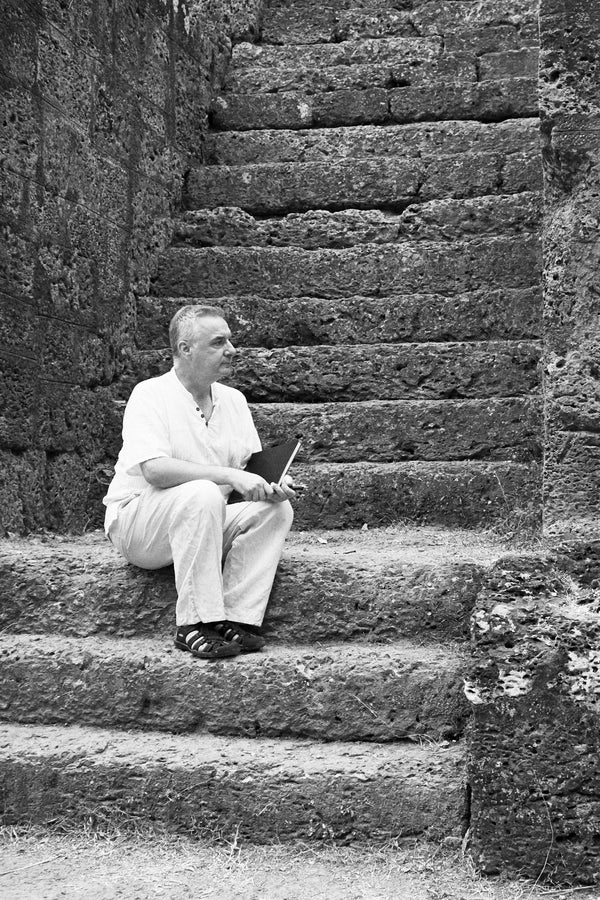
Join My Studio Journal
Receive occasional letters from my studio in Siem Reap—offering a glimpse into my creative process, early access to new fine art prints, field notes from the temples of Angkor, exhibition announcements, and reflections on beauty, impermanence, and the spirit of place.
No noise. No clutter. Just quiet inspiration, delivered gently.
Subscribe and stay connected to the unfolding story.
